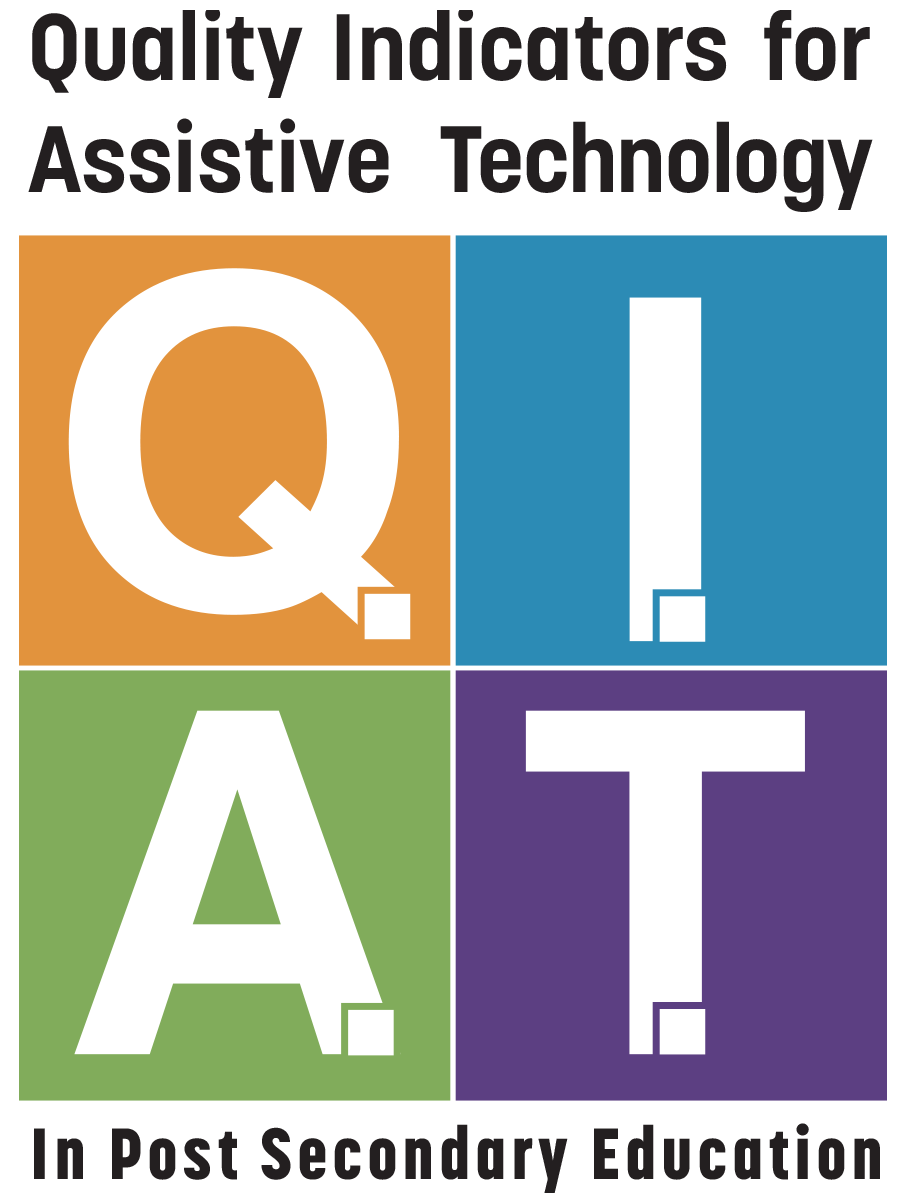Campus Self-Evaluation Matrix
One of the primary interactive tools developed by QIAT-PS project is the Campus Self-Evaluation Matrix. The Matrix is a descriptive rating scale for each quality indicator. It is intended to be used for internal program evaluation and goal setting to improve AT services and supports. An individual or team using the tool chooses the indicator variation from 1 to 5 which most closely matches their program, 1 being a novice and 5 being expert or advanced. There is a notes section to add details about the matrix the score.
You can create a free institutional account that will allow you to keep multiple versions of your Campus Self-Evaluation Matrix results, create comparison reports, and generate an action plans to set goals and receive activity reminders. If you already have QIAT-PS account, select Account from the top right to start a new matrix or to view your existing matrices. Or Create an Account to get started.
Quality Indicators
The QIAT-PS indicators are a set of statements that describe the characteristics of high quality AT services provided to students in Post-Secondary educational environments. The indicators are divided into five general areas.
The areas are:
1. Awareness and Eligibility
The Awareness and Eligibility area describes the steps programs take to make sure that students with disabilities are aware of AT services on the campus and know how to get access to them.
2. Planning and Implementation
The Planning and Implementation area describes the things that programs do to make sure that students are able to use their AT devices as accommodations in classrooms and other campus settings.
3. Evaluation of Effectiveness
Evaluation of effectiveness addresses activities that programs engage in to help ensure that their AT services are effective and as efficient as possible.
4. Administrative Support
The administrative supports that are necessary in order to ensure continuity of program improvement efforts are described in this area. The indicators address the development of policies, procedures and other supports needed in order to maintain and improve AT programs at the Post-Secondary level.
5. Professional Development and Training
Professional development and training describes critical features of AT training efforts for all staff and other key players in the AT program.

